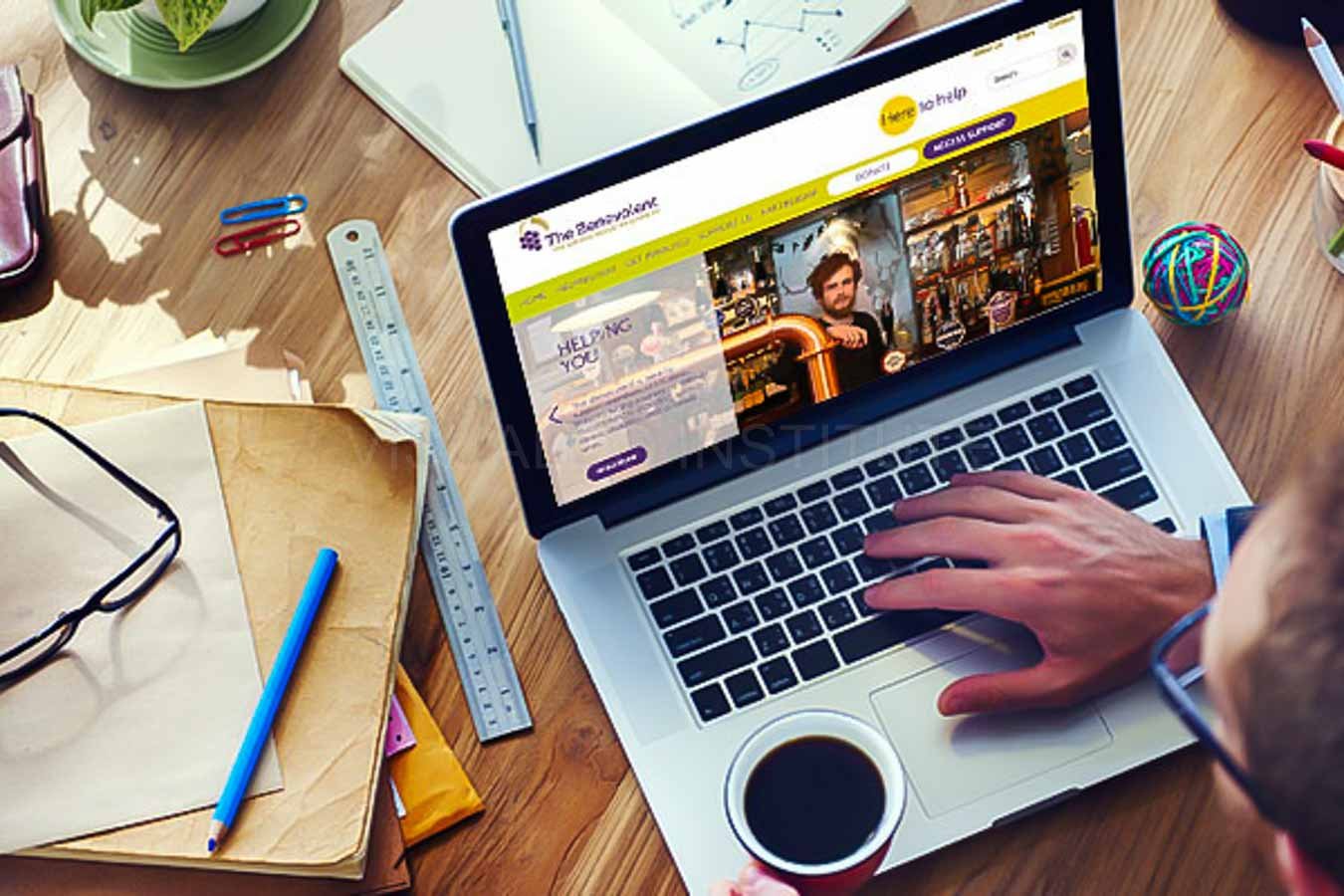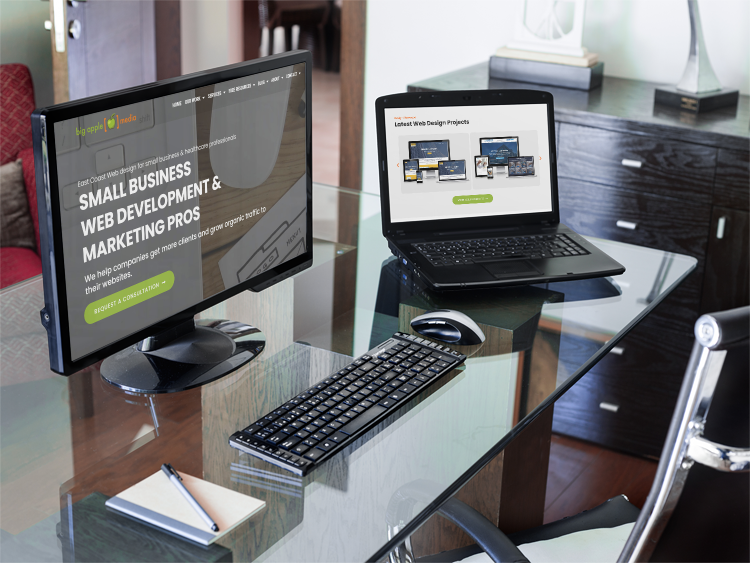Why Holistic Internet Design Is the Secret to a Smooth User Experience
In today's digital landscape, the value of alternative web style can not be overstated, as it delicately weaves together visual appeals, use, and performance to develop a seamless customer experience. By adopting a thorough method that focuses on user requirements and leverages feedback, designers can boost the overall communication with their systems.
Comprehending All Natural Web Layout

Including individual comments and behavioral information is important in holistic website design. This iterative process aids designers to identify discomfort points and areas for renovation, making certain that the end product reverberates with individuals. Furthermore, holistic layout highlights the significance of accessibility, making certain that all individuals, regardless of their abilities, can browse and communicate with the internet site successfully.
Additionally, the combination of responsive style concepts is important in suiting different tools and screen dimensions, better improving the user experience. By comprehending the interconnectedness of these parts, developers can develop sites that not just attract however additionally keep users, inevitably driving engagement and conversions. All natural web design is, consequently, a strategic technique that cultivates a significant relationship between individuals and electronic rooms, leading the way for lasting on-line success.
Key Components of Holistic Design

An additional important component is consistency in visual and useful aspects throughout the site. This entails maintaining a natural color combination, typography, and format, which assists individuals navigate the website intuitively - happy web design. Additionally, responsive design is essential, guaranteeing that the website performs ideally across various gadgets and display dimensions
Access is likewise an important component of all natural design. By sticking to accessibility criteria, developers can develop inclusive experiences that satisfy varied individual teams, including those with specials needs. The integration of material approach makes certain that useful information is provided plainly and succinctly, boosting comprehension and engagement.
Finally, effective partnership amongst style, advancement, and advertising teams fosters a unified vision that lines up with company goals. By concentrating on these crucial aspects, holistic website design can provide an improving individual experience that is both interesting and practical.
Advantages of a Seamless Experience
Developing a seamless customer experience provides numerous benefits that significantly enhance total satisfaction and interaction. At its core, a smooth experience fosters a sense of simplicity and intuitiveness, permitting users to browse a website or application effortlessly. This reduction in rubbing not just enhances the possibility of customers returning but also improves their desire to recommend the platform to others.
Furthermore, a seamless experience brings about boosted conversion prices. When users find what they require with minimal effort, they are more likely to complete desired actions, such as purchasing or signing up for a newsletter. This performance converts into greater customer retention, as completely satisfied users are more probable to come to be loyal supporters for the brand.
Furthermore, a cohesive and seamless user interface minimizes cognitive tons, allowing individuals to concentrate on web content as opposed to dealing with navigating or design inconsistencies. This clarity not just enhances user complete satisfaction yet also enhances brand name trustworthiness. Eventually, focusing on a smooth individual experience results in an affordable benefit, as organizations that invest in this facet are much better placed to satisfy the developing expectations of their audience and drive more tips here lasting success.
Carrying Out Holistic Techniques
To accomplish a truly seamless customer experience, organizations need to embrace all natural techniques that think about every facet of layout and functionality. This method starts with a combined vision that aligns employee across various self-controls, consisting of UX/UI layout, content advancement, and technical application. Effective cooperation cultivates a shared understanding of individual demands and objectives, allowing for even more coherent layout choices.
Next, it is important to create individual identities and journey maps that show the varied demographics and behaviors of the target market. By empathizing with customers' viewpoints, companies can prepare for obstacles and enhance communications throughout the digital experience.

Additionally, consistent branding and messaging should penetrate every touchpoint, ensuring an identifiable and trustworthy existence that enhances individual interaction. Integrating receptive design principles is likewise important, as users now engage with content across several gadgets.
Moreover, organizations need to prioritize accessibility, making certain that all customers, despite ability, can navigate and benefit from their electronic offerings. By installing these alternative techniques right into the style process, companies can produce a cohesive and enjoyable customer experience that promotes satisfaction and commitment.
Determining User Experience Success
While attaining an alternative approach to website design is important, gauging individual experience success these details is equally try these out crucial to guarantee that layout methods effectively fulfill user demands. This requires a mix of qualitative and quantitative metrics to acquire a comprehensive understanding of individual interactions and fulfillment levels.
Secret efficiency signs (KPIs) such as customer engagement, conversion rates, and bounce prices supply valuable measurable understandings. For instance, a high conversion price may suggest that customers find the style user-friendly and engaging. Alternatively, elevated bounce rates can indicate that customers are disappointed or baffled, demanding a reevaluation of the design aspects.
Qualitative steps, consisting of customer feedback, studies, and functionality testing, are important for gaining much deeper insights into the individual experience. Examining user remarks can expose pain factors and areas for renovation, while functionality examinations permit developers to observe real-time communications and identify barriers individuals deal with.
Inevitably, the assimilation of these dimension strategies allows for continuous improvement of website design, ensuring it stays user-centered and efficient in providing a smooth experience (happy web design). Regularly reviewing these metrics will certainly enable developers to adjust to developing customer demands and choices, strengthening the general success of a holistic website design approach
Verdict
In verdict, all natural internet layout emerges as a basic method to attaining a seamless customer experience. By integrating aesthetics, performance, and functionality, this design approach addresses diverse individual demands and preferences.